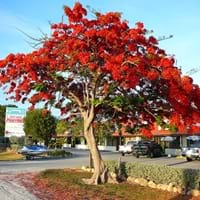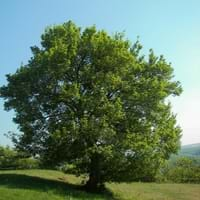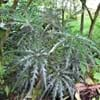Life Span
Perennial
Perennial
Origin
Madagascar
Europe, Northern Africa, Western Asia
Types
Delonix regia var. flavida Stehle
Delonix regia var. genuina Stehle
Delonix regia var. genuina Stehlé
A. campestre var. campestre - downy fruit
A. campestre var. leiocarpum (Opiz) Wallr. (syn. A. campestre subsp. leiocarpum) - hairless fruit
Habitat
gardens, Roadsides, Shaded sites, Woodlands
Forest margins, gardens, Suburban areas, Woods
USDA Hardiness Zone
10-15
5-8
Sunset Zone
H1, H2
2a, 2b, 3a, 3b, 4, 5, 6, 7, 8, 9, 14, 15, 16, 17
Habit
Spreading
Oval or Rounded
Flower Color
Red, Orange Red
Green, Light Yellow
Flower Color Modifier
Bicolor
Bicolor
Fruit Color
Brown
Light Yellow, Light Pink, Light Green, Tan
Leaf Color in Spring
Green
Green, Light Green
Leaf Color in Summer
Green, Dark Green
Dark Green
Leaf Color in Fall
Dark Green
Yellow, Gold, Tan
Leaf Color in Winter
Not Available
Not Available
Leaf Shape
Pinnate
Maple shaped
Plant Season
Spring, Summer, Fall
Spring, Summer, Fall
Sunlight
Full Sun
Full Sun, Partial Sun
Type of Soil
Loam, Sand
Clay, Loam, Sand
The pH of Soil
Acidic, Neutral, Alkaline
Acidic, Neutral, Alkaline
Soil Drainage
Well drained
Average
Bloom Time
Late Spring, Early Summer, Summer
Early Spring
Tolerances
Pollution, Drought, Salt
Pollution, Soil Compaction
Where to Plant?
Ground
Ground
How to Plant?
Grafting, Seedlings, Stem Planting, Transplanting
Grafting, Seedlings, Transplanting
Plant Maintenance
Medium
Medium
Watering Requirements
Average Water Needs, Reduce watering in winter
Needs watering once a week, Requires watering in the growing season
In Summer
Lots of watering
Lots of watering
In Spring
Moderate
Moderate
In Winter
Average Water
Average Water
Soil pH
Acidic, Neutral, Alkaline
Acidic, Neutral, Alkaline
Soil Type
Loam, Sand
Clay, Loam, Sand
Soil Drainage Capacity
Well drained
Average
Sun Exposure
Full Sun
Full Sun, Partial Sun
Pruning
Prune if you want to improve plant shape, Remove damaged leaves, Remove dead branches, Remove dead leaves, Shape and thin as needed
Prune if you want to improve plant shape, Prune in winter, Prune to stimulate growth, Remove damaged leaves, Remove dead leaves, Remove deadheads
Fertilizers
All-Purpose Liquid Fertilizer
All-Purpose Liquid Fertilizer
Pests and Diseases
Pests and diseases free
Fungal Diseases
Plant Tolerance
Drought
Drought
Flowers
Showy
Insignificant
Flower Petal Number
Single
Single
Foliage Texture
Fine
Medium
Foliage Sheen
Matte
Glossy
Attracts
Birds, Hummingbirds, Butterflies
Not Available
Allergy
no allergic reactions
Asthma
Aesthetic Uses
Beautification, Showy Purposes
Showy Purposes
Beauty Benefits
Not Available
Not Available
Environmental Uses
Air purification
Air purification
Medicinal Uses
No Medicinal Use
Sore Eyes
Part of Plant Used
Bark, Pods, Sap
Bark, Sap
Other Uses
Gum, Used as firewood, Used As Food, Used as Ornamental plant
Grown for shade, Used in Furniture, Used in making musical instruments
Used As Indoor Plant
No
No
Used As Outdoor Plant
Yes
Yes
Garden Design
Feature Plant, Shade Trees, Street Trees, Tropical
Feature Plant, Hedges, Screening / Wind Break, Shade Trees
Botanical Name
DELONIX regia
ACER campestre
Common Name
Flamboyant Tree, Flame Tree, Royal Poinciana
Field Maple, Hedge Maple
In Hindi
चमकीला
फील्ड मेपल
In German
Flamboyant
Feld-Ahorn
In French
Flamboyant
Maple terrain
In Spanish
Extravagante
arce de campo
In Greek
Επιδεικτικός
Το πεδίο Maple
In Portuguese
extravagante
bordo de campo
In Polish
Kwiecisty
Klon polny
In Latin
flamboyant
Field Maple
Phylum
Not Available
Magnoliophyta
Class
Magnoliopsida
Magnoliopsida
Family
Fabaceae
Aceraceae
Clade
Angiosperms, Eudicots, Rosids
Angiosperms, Eudicots, Rosids
Tribe
Caesalpinieae
Not Available
Subfamily
Caesalpinioideae
Hippocastanoideae
Number of Species
Not Available
Season and Care of Flamboyant Tree and Field Maple
Season and care of Flamboyant Tree and Field Maple is important to know. While considering everything about Flamboyant Tree and Field Maple Care, growing season is an essential factor. Flamboyant Tree season is Spring, Summer and Fall and Field Maple season is Spring, Summer and Fall. The type of soil for Flamboyant Tree is Loam, Sand and for Field Maple is Clay, Loam, Sand while the PH of soil for Flamboyant Tree is Acidic, Neutral, Alkaline and for Field Maple is Acidic, Neutral, Alkaline.
Flamboyant Tree and Field Maple Physical Information
Flamboyant Tree and Field Maple physical information is very important for comparison. Flamboyant Tree height is 610.00 cm and width 610.00 cm whereas Field Maple height is 910.00 cm and width 910.00 cm. The color specification of Flamboyant Tree and Field Maple are as follows:
Flamboyant Tree flower color: Red and Orange Red
Flamboyant Tree leaf color: Green
Field Maple flower color: Green and Light Yellow
- Field Maple leaf color: Green and Light Green
Care of Flamboyant Tree and Field Maple
Care of Flamboyant Tree and Field Maple include pruning, fertilizers, watering etc. Flamboyant Tree pruning is done Prune if you want to improve plant shape, Remove damaged leaves, Remove dead branches, Remove dead leaves and Shape and thin as needed and Field Maple pruning is done Prune if you want to improve plant shape, Prune in winter, Prune to stimulate growth, Remove damaged leaves, Remove dead leaves and Remove deadheads. In summer Flamboyant Tree needs Lots of watering and in winter, it needs Average Water. Whereas, in summer Field Maple needs Lots of watering and in winter, it needs Average Water.





